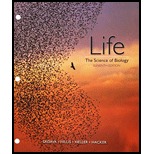
Concept explainers
To review:
The relationship of defects in various bones, muscular system, and cardiovascular system of an infant with the deficiency of vitamin A.
Introduction:
The zygote is formed after the fertilization of an egg with the sperm. It further divides to form blastula that gets implanted into the uterine wall of the mother for its further growth. Formation of three germ layers occurs, from which various organs and organ systems of the fetus originate (organogenesis).
Explanation of Solution
The three germ layers: ectoderm, endoderm, and mesoderm arise from the embryo as a result of gastrulation that is sequentially positioned and organogenesis occurs in a coordinated manner. Some cells migrate anteriorly and becomes the part of endoderm. Another group of cells that migrate towards the midline of the embryo becomes the mesoderm and rest of the cells present above the mesoderm at the periphery forms the ectoderm.
Organs such as epidermis, nervous system, hairs, nails, and mouthparts arise from the ectoderm. The mesoderm also contributes to the formation of nervous system and other organs such as mesenchyme, cardiac and skeletal muscles, and gonads development.
This differentiation of three layers occurs during the first trimester of the gestation period. Several chemicals, as well as the environmental factors, affect the development of the embryo during this time. Deficiency or increased levels of these chemicals such as vitamins, folic acids, and valproic acid may yield detrimental results for the developing fetus. The deficiency of vitamin A has ill effects on the organs originating from the ectoderm and if present in excess amount then it can result in mesenchymal defects.
Thus, if an infant show defects in cardiovascular system, muscular system, bones, and mesenchyme that is due to the presence of excess levels of vitamin A and not due to deficiency of vitamin A. The reason behind this is deficiency of vitamin A causes defects in the organs originating from the ectoderm layer, whereas the cardiac system, muscular system and mesenchyme are mesodermally originating organs. However, excess level of vitamin A does affect the mesenchyme, which is mesodermally derived.
Therefore, the deficiency of vitamin A do not affect the mesenchyme, bones, cardiac and muscular systems in the infant rather the presence of excess levels of vitamin A cause these defects. Vitamin A deficiency causes defects in the ectodermal derived tissues and organs.
Want to see more full solutions like this?
Chapter 43 Solutions
LIFE: THE SCIENCE OF BIOLOGY
- What is behavioral adaptarrow_forward22. Which of the following mutant proteins is expected to have a dominant negative effect when over- expressed in normal cells? a. mutant PI3-kinase that lacks the SH2 domain but retains the kinase function b. mutant Grb2 protein that cannot bind to RTK c. mutant RTK that lacks the extracellular domain d. mutant PDK that has the PH domain but lost the kinase function e. all of the abovearrow_forwardWhat is the label ?arrow_forward
- Can you described the image? Can you explain the question as well their answer and how to get to an answer to an problem like this?arrow_forwardglg 112 mid unit assignment Identifying melting processesarrow_forwardGive only the mode of inheritance consistent with all three pedigrees and only two reasons that support this, nothing more, (it shouldn't take too long)arrow_forward
- Oarrow_forwardDescribe the principle of homeostasis.arrow_forwardExplain how the hormones of the glands listed below travel around the body to target organs and tissues : Pituitary gland Hypothalamus Thyroid Parathyroid Adrenal Pineal Pancreas(islets of langerhans) Gonads (testes and ovaries) Placentaarrow_forward
 Nutrition Through The Life CycleHealth & NutritionISBN:9781337919333Author:Brown, Judith E.Publisher:Cengage Learning,Understanding Health Insurance: A Guide to Billin...Health & NutritionISBN:9781337679480Author:GREENPublisher:Cengage
Nutrition Through The Life CycleHealth & NutritionISBN:9781337919333Author:Brown, Judith E.Publisher:Cengage Learning,Understanding Health Insurance: A Guide to Billin...Health & NutritionISBN:9781337679480Author:GREENPublisher:Cengage Human Heredity: Principles and Issues (MindTap Co...BiologyISBN:9781305251052Author:Michael CummingsPublisher:Cengage Learning
Human Heredity: Principles and Issues (MindTap Co...BiologyISBN:9781305251052Author:Michael CummingsPublisher:Cengage Learning





